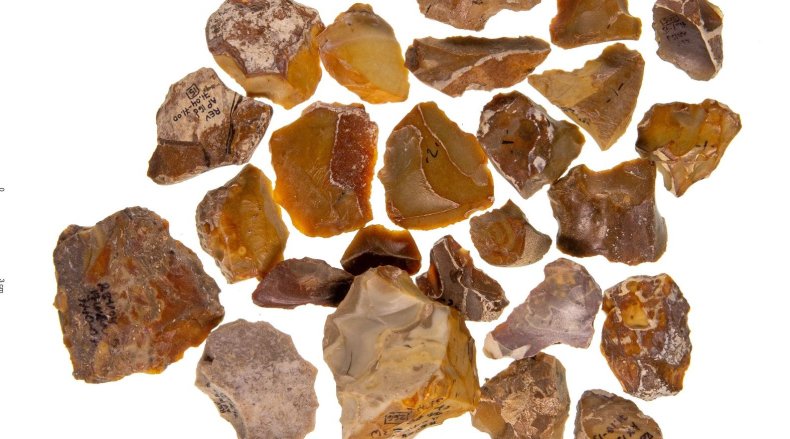Prehistoric Humans Recycled Old Tools, Possibly to Honor Ancestors
BY DIANA BLETTER, ZENGER NEWS ON 3/17/22
Prehistoric human beings collected and recycled old tools, possibly to preserve their ancestors' memory, according to scientists at Tel Aviv University who examined flint tools from 500,000 years ago in an archeological site in Revadim, in southern Israel.
Revadim was a popular site for early humans because of its abundance of wildlife and flint with which to make tools, according to the authors of a study published in Scientific Reports.
The study was written by PhD student Bar Efrati and Prof. Ran Barkai of TAU, along with Flavia Venditti from the University of Tubingen in Germany and Prof. Stella Nunziante Cesaro from the Sapienza University of Rome.
Even though there was enough flint available to make new tools, the early humans seemed to reuse older tools.
Efrati said the researchers discovered tools that had two different "life cycles," as evidenced by two distinct layers of patina, a chemical film that forms when the flint is exposed to the elements for long periods of time.
Analysis of 49 flint tools with two life cycles found at the site revealed that prehistoric humans took the earlier tools and gave them a new active edge, exposing and reshaping fresh flint.Researchers were surprised to find that the tools were used primarily for cutting during their first life cycle, but in their second they were primarily used for scraping, likely for processing soft materials like leather and bone.

Flint tools from the Revadim archeological site in Israel dated to 500,000 years ago show evidence of two life cycles, suggesting prehistoric humans collected and recycled older objects.
TEL AVIV UNIVERSITY
Efrati added that they were also surprised to find the tools reshaped very minimally, preserving the original form. According to the authors, this suggests the early humans attached emotional significance to the old tools.
"Imagine a prehistoric human walking through the landscape 500,000 years ago, when an old stone tool catches his eye," Barkai said. "The tool means something to him — it carries the memory of his ancestors or evokes a connection to a certain place. He picks it up and weighs it in his hands. The artifact pleases him, so he decides to take it 'home'."
According to Barkai, prehistoric humans likely had the same urge as modern humans to collect objects that hold memories.
"The more we study early humans, we discover that they were not so different from us," Barkai said.
"This study suggests that collectors and the urge to collect may be as old as humankind. Just like us, our early ancestors attached great importance to old artifacts, preserving them as significant memory objects — a bond with older worlds and important places in the landscape."
Efrati added that they were also surprised to find the tools reshaped very minimally, preserving the original form. According to the authors, this suggests the early humans attached emotional significance to the old tools.
"Imagine a prehistoric human walking through the landscape 500,000 years ago, when an old stone tool catches his eye," Barkai said. "The tool means something to him — it carries the memory of his ancestors or evokes a connection to a certain place. He picks it up and weighs it in his hands. The artifact pleases him, so he decides to take it 'home'."
According to Barkai, prehistoric humans likely had the same urge as modern humans to collect objects that hold memories.
"The more we study early humans, we discover that they were not so different from us," Barkai said.
"This study suggests that collectors and the urge to collect may be as old as humankind. Just like us, our early ancestors attached great importance to old artifacts, preserving them as significant memory objects — a bond with older worlds and important places in the landscape."
SPEAKING OF
No comments:
Post a Comment